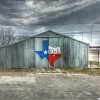
The name Texas originates from the Caddo word “thecas,” which means “allies or friends.” Texas became a state in 1845 and is the second largest state in the United States. First inhabited by numerous indigenous groups, Texas has a rich and complicated history comprised of distinct waves of colonization, settlement, slavery, and rebellion. Spain, France, Mexico, the Republic of Texas, the Confederate States of America, and the U.S have all ruled over the Texas territory.
The state's growth has been driven by the cattle, agricultural, and petroleum industries. Texas is often associated with frontier culture and mythology and has a strong tourism industry with popular sights including the Alamo, Fort Worth, the Space Center, Padre Island, and others. Texas is also known for its beautiful landscapes, including the rugged beauty of the Chihuahuan desert, the swampy wetlands of the Piney Woods ecosystem of East Texas, and its long coastline along the Gulf of Mexico. Texas is also recognized for its racial and ethnic diversity, cultural hotspots, and dense urbanity in cities including Austin, Dallas, and Houston.










